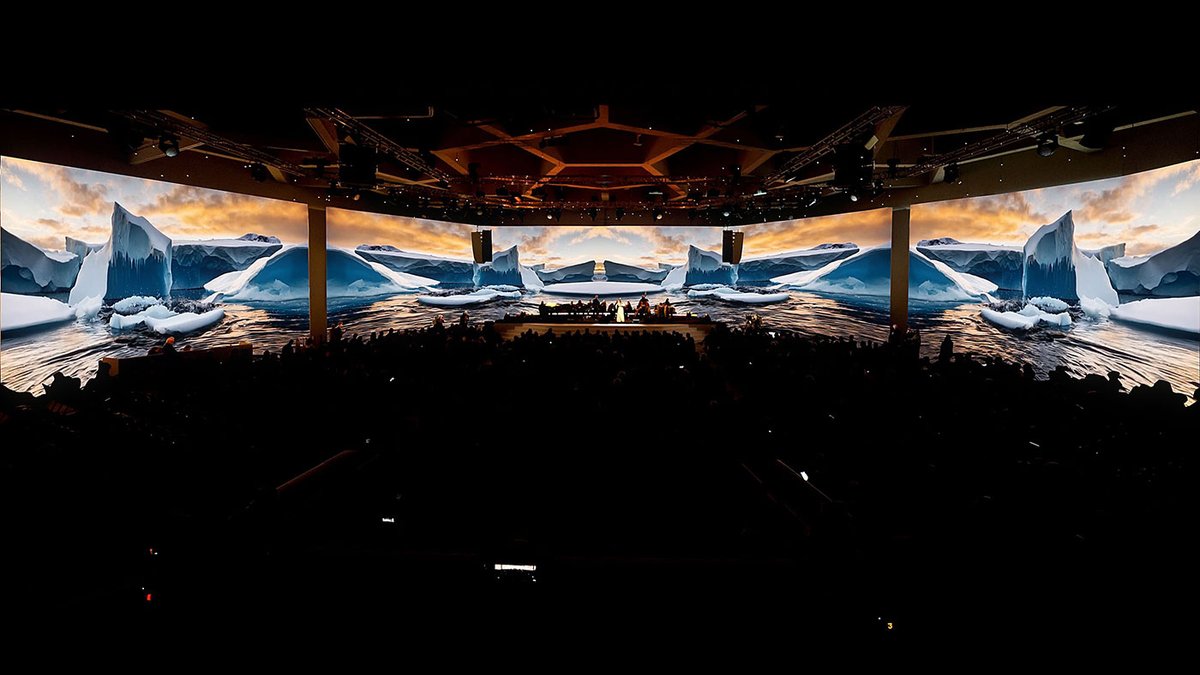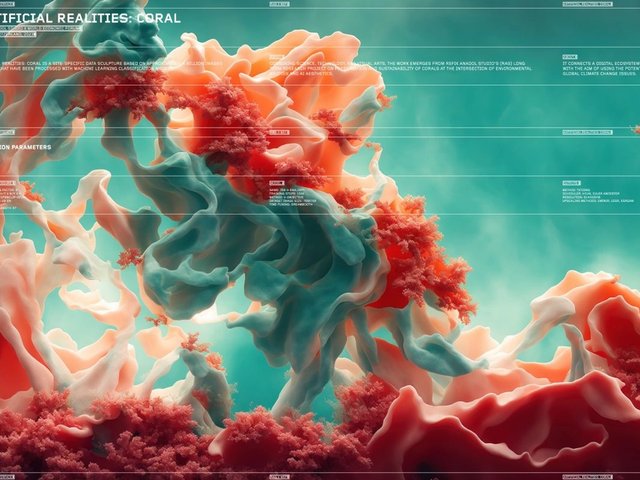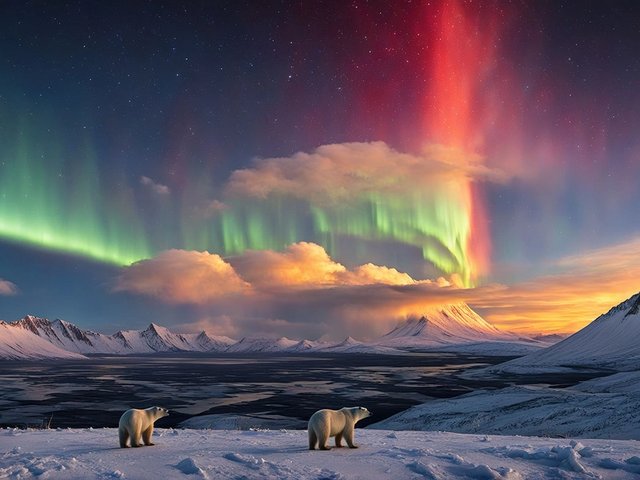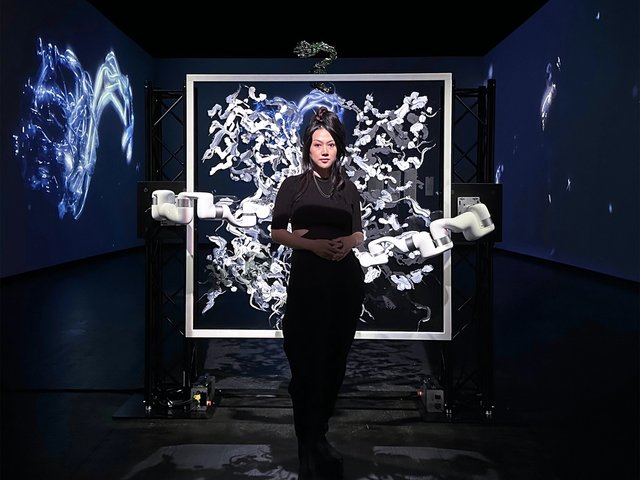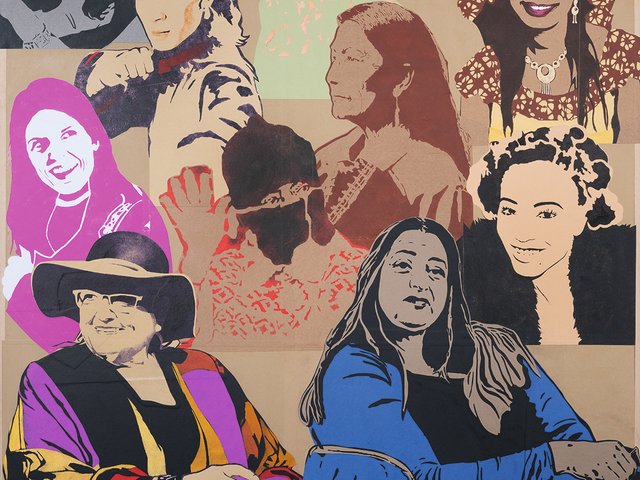The opening concert at the annual meeting of the World Economic Forum (WEF) in Davos is the event where Joseph Fowler, WEF’s head of arts and culture, presents one of the meeting’s cultural statements—inspired by the forum’s focus on sustainability, innovation and global progress—to 2,500 high-profile delegates from the worlds of politics, business and academia as well as a livestream audience.
This year’s opening concert is in honour of the United Nations’ declaration of 2025 as the International Year of Glacier Preservation and in alignment with the 2025 WEF annual meeting’s overarching theme of “Collaboration for the Intelligent Age”. For Fowler, the focus of that collaboration is between human craft and the power of technology and artificial intelligence. “How do we preserve the intrinsic value of the human touch in a world that prizes efficiency?” Fowler asks in his introduction to the programme. “How can we leverage AI as a tool to amplify, not overshadow, human creativity? And, perhaps most critically, how do we ensure that the arts continue to reflect the most intimate parts of our shared humanity – the struggles, joys, contradictions and aspirations—amid the rise of a technology-driven world?”
For the third year in succession, Fowler has programmed an environmental theme for the concert and it is the second time he has commissioned the high-profile Turkish-born, Los Angeles-based media artist Refik Anadol to create immersive AI-driven visuals to present a digital-art call to action, to challenge summit delegates to act with awareness of the urgency of the climate crisis and the need for environmental action.
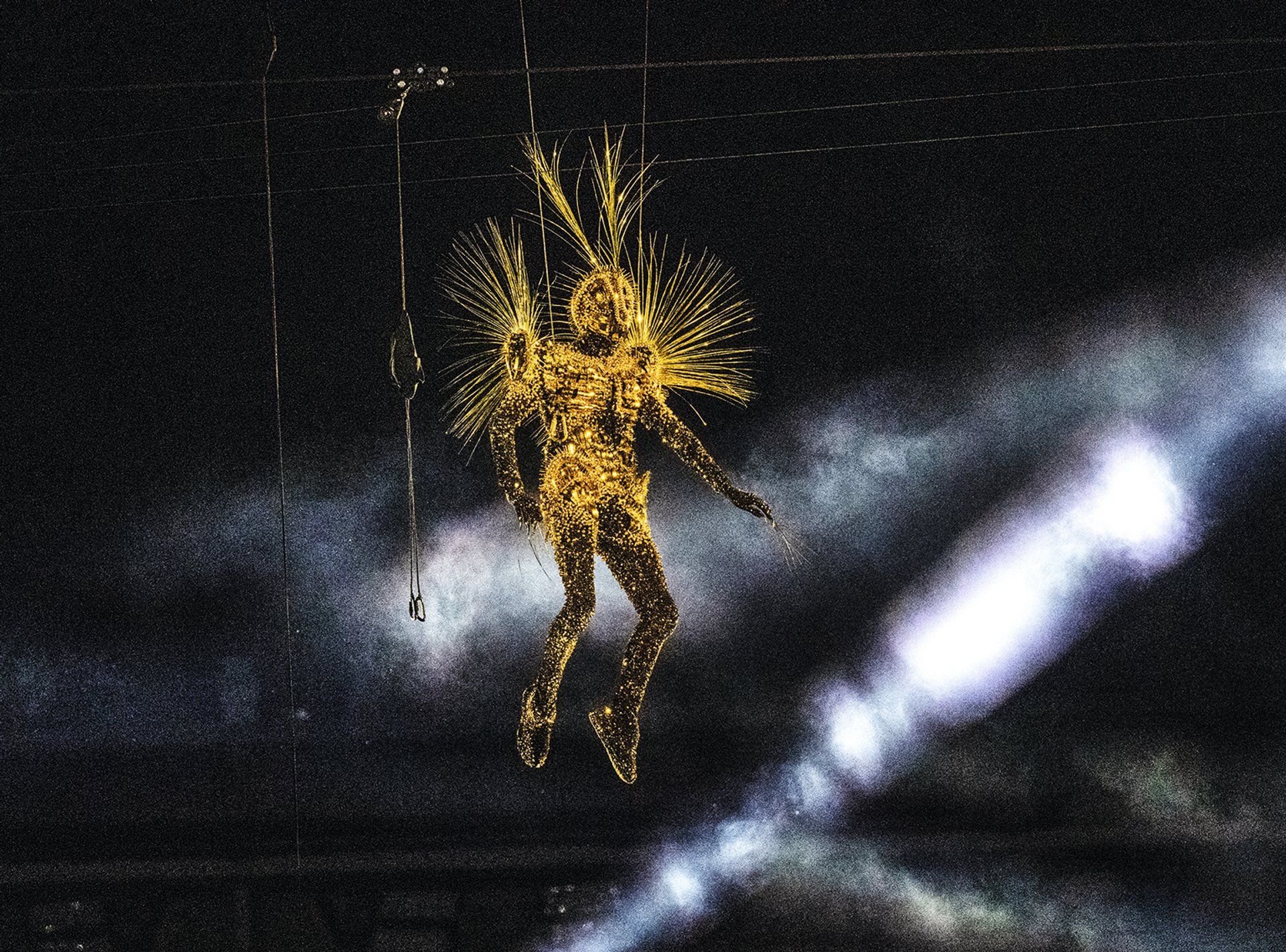
The Golden Voyager by Kévin Germanier appeared in the Paris 2024 Olympics closing ceremony and will also feature at this year’s annual meeting
IOC/Ubald Rutar; All rights reserved
In 2023 (Fowler’s second year in charge at the annual meeting’s arts and culture programme), the subject was the coral ecosystems of the Northern Red Sea, demonstrating the impact of rising temperatures on these underwater ecosystems. In 2024 the topic was the relationship between the Sahara desert and the Amazon rainforest, and the requirement to protect those environments and the Indigenous peoples who safeguard them. This year the concert focuses on the rapidly melting polar ice caps and, in particular, on ice loss in Antarctica, home to an estimated 91% of the world’s glaciers, and the attendant rise in sea levels and change in weather patterns. As the singers Ane Brun, Danielle de Niese and Jeremy Dutcher perform compositions and arrangements by Brun, Dutcher and the musicians Tim Allhoff, Michael Kamm and Christopher Tin—a mix of classical, electronic and synthetic music, much of it commissioned by Fowler—Anadol will run an 18-channel projection around the hall and main stage, creating an immersive experience that responds in real time to the music, using an AI model that has been trained on data sets of around 70 million images of glaciers.
A mix of craft and tech
When devising a programme to mark collaboration in the intelligent age, on behalf of the forum, Fowler invited seven artists to exhibit as cultural leaders both in a tech strand—featuring Anadol and the Chinese Canadian artist Sougwen Chung, who has created an AI programme to make paintings by harnessing custom robotic units to her brainwaves—and a celebration of established practice. “How are we preserving where we’re coming from?” Fowler says. “Because only by doing that can we successfully venture forwards.” To honour the importance of craft and community, he invited the pioneer Pop artist Jann Haworth, her daughter and collaborator Liberty Blake, and the US quilt artist Gary Tyler to show at Davos. Talking of Tyler’s ineffably beautiful work, which is infused with optimism despite the artist’s four decades of wrongful imprisonment, Fowler sees “a very interesting conversation about the role of art when it comes to human resilience and again what it is to be human in the intelligent age”.
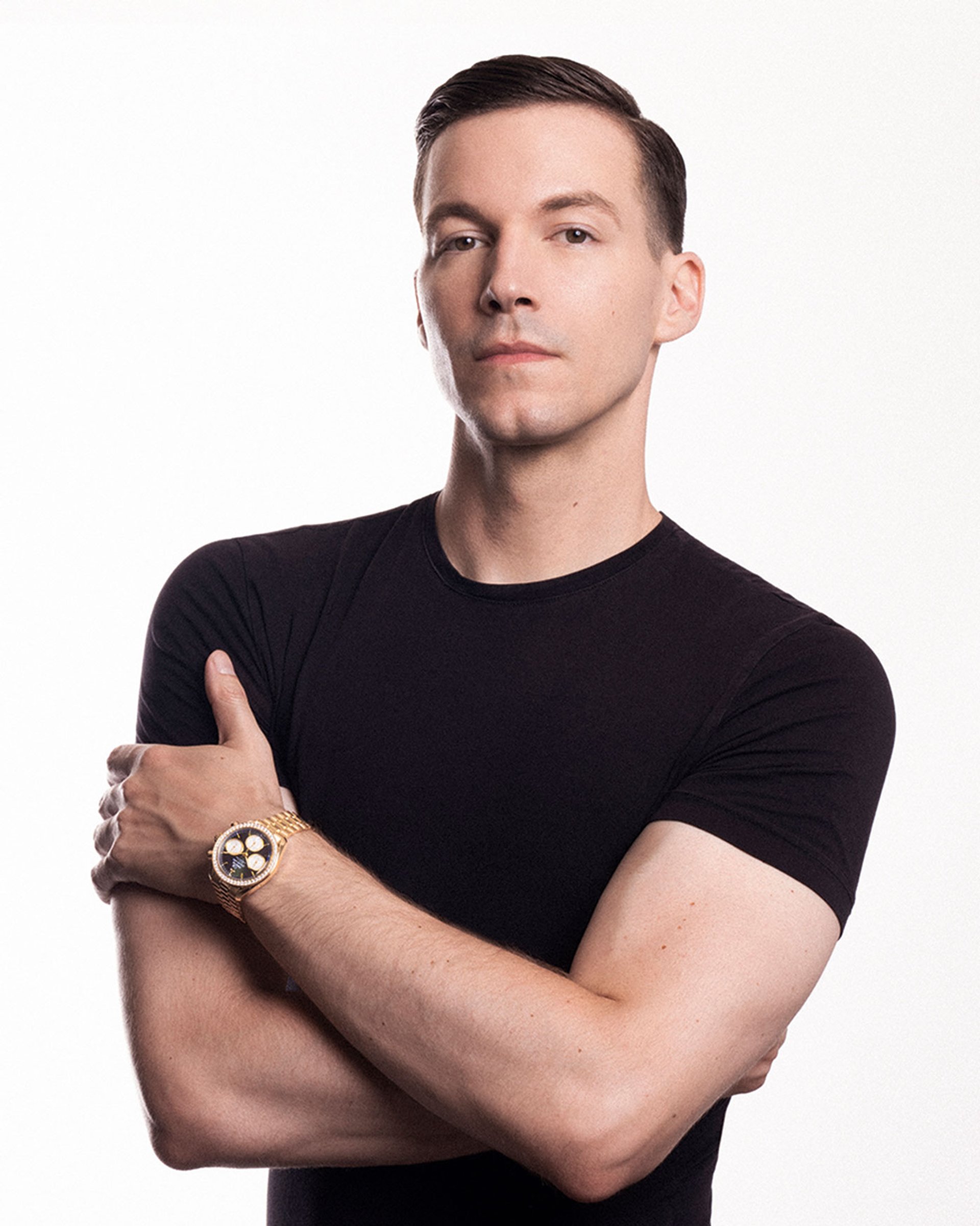
Kévin Germanier has designed upcycled and recycled costumes for the opening concert of the World Economic Forum's annual meeting in Davos Courtesy of World Economic Forum
During the opening concert, Brun and De Niese will wear bespoke upcycled costumes created by the young, Paris-based Swiss designer Kévin Germanier. For Fowler, Germanier is a “leader in sustainable fashion”, one who is “charting a new course for an industry often criticised for its environmental impact, proving that style and sustainability can co-exist without compromise. His pioneering use of upcycled and sustainable materials challenges conventional notions of fashion”. Germanier had a standout moment last year when his costumes featured in the closing ceremony of the Paris 2024 Olympics, notably in the figure of the Golden Voyager, a fully upcycled creation that pays homage to Nasa’s Golden Record, a symbol and summary of human achievement placed on board thetwo Voyager spacecrafts in 1977, with greetings in 55 languages, sounds and images of nature, and music from diverse cultures—a time capsule for potential extraterrestrial life that might one day find it. Joining Germanier as a champion of sustainability is the Mexican photographer, marine biologist and conservationist Cristina Mittermeier with her WEF-commissioned exhibition Hope, a reflection of her 2024 book of the same name, in which, Fowler says, her photographs and advocacy for the planet inspire us to recognise “the beauty that still exists, even in the face of a climate crisis, and to embrace Hope as a path forwards as opposed to the apocalyptic narratives we are so often fed”.
At the centre of forum’s mission
WEF’s annual meeting at Davos consists of around 300 events characterised on its website as ranging from “EV supply chains to the global debt burden, and from carbon pricing to reinventing retirement”. To capture delegates’ attention in such a packed week, Fowler presents arts programming in line with the meeting’s official programme. “By supporting independent artists to develop pieces aligned with key focus areas such as sustainability, innovation and global progress,” Fowler tells The Art Newspaper, “we ensure that the arts remain central to the forum’s mission and participants’ experience.” Artists who represent change are put in front of people with the governmental and institutional heft to turn that change into social progress. After presenting his ethically sourced and carbon neutral Large Nature Model at the 2024 annual meeting, Anadol was gratified by the practical response from a number of Latin American government ministers he met from countries responsible for the Amazon rainforest: “It was super exciting and super functional,” Anadol tells The Art Newspaper.
Fowler cites Benjamin Von Wong, the Canadian photographer and plastics pollution activist, as another artist who has felt the power of engaging with decision-makers at Davos. At the annual meeting in January 2024, Fowler says, Von Wong had presented “compelling visuals to ignite urgent discussions around overconsumption and environmental crises” with his exhibition Trashtopia. For a creative like Von Wong, Fowler says, it is “huge” to get feedback from global leaders at Davos, and “also potentially to then...have the work taken into another space, out of an exclusive art space”. In Von Wong’s case it was to have his Biodiversity Jenga, a 6m-tall art installation, shown in October 2024 at COP16, the United Nations biodiversity conference, in Cali, Colombia, where “it got immense traction”. It’s a massive thing, Fowler says, to make such connections: “The forum is probably the only place in the world where that can actually happen.”
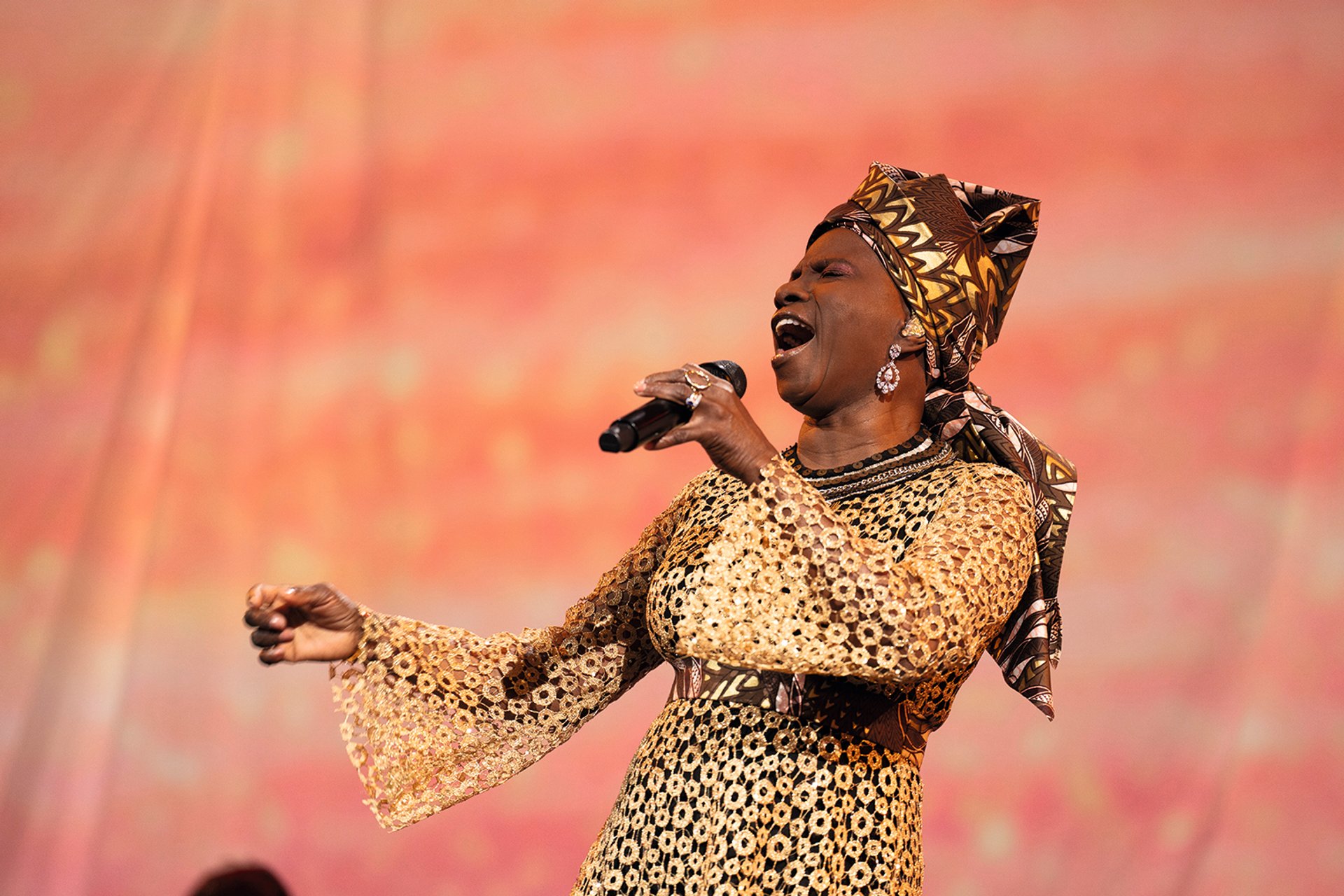
WEF’s 2024 annual meeting opening concert featured performers including Angélique Kidjo
World Economic Forum/Pascal Bitz
The arts and culture programme is made up of the opening concert, art exhibitions, sessions, panel discussions and a cultural table, Art Can Change the World, whose featured speakers include Mittermeier and her fellow cultural leaders Mohammed Saeed Harib, the Emirati film-maker and creator of the ground-breaking animated series Freej; Misty Copeland, the first female Black dancer to be promoted to principal artist at the American Ballet Theatre, who is advocating for inclusion and for access to education; the British Olympic diving champion, knitting brand founder and LGBTQ+ activist Tom Daley; and Melanie Brown, the former Spice Girl and campaigner for UK charity Women’s Aid against domestic abuse.
In addition to the annual meeting in Davos, the Geneva-based Fowler oversees the arts and cultural programme for all WEF events throughout the year. These include the annual meeting of new champions, held last June in Dalian, in China. Germanier, Fowler says, “delivered an inspiring keynote presentation” at Dalian “about his discovery of upcycling and his vision for sustainable fashion on a global scale”.
A background in performing arts
Fowler has a rich background in the performing arts and arts administration to call on in running the WEF cultural programme. The son of parents who worked in education, he trained at the Royal Ballet School in London and performed with the Royal Ballet and as a soloist with the Zurich Ballet. “These years on stage were transformative,” Fowler tells The Art Newspaper, “allowing me to perform alongside incredible talent and to work with some of the most influential choreographers of our time, including Hans van Manen, William Forsythe, Mats Ek and Roland Petit.” Those experiences, he says, “ignited a drive to challenge conventions and push creative boundaries in everything I do”.
While still performing, Fowler was “drawn to the production and programming side of the arts”, and became in time resident director at Théâtre du Châtelet in Paris, director of programming and events at Dubai Opera, movement director at the Comédie-Française in Paris, and associate director at Regent’s Park Open Air Theatre in London. During a decade working in the Gulf, Fowler was general manager at the Dubai Community Theatre & Arts Centre, the Gulf’s first non-profit, cross-community creative hub. Before joining WEF, he was the director of opera, arts and culture at Expo 2020 in Dubai, an event that was delayed by the Covid-19 pandemic and ultimately ran from October 2021 to March 2022.

The programme was devised by Joseph Fowler, WEF’s head of arts and culture
World Economic Forum/Sikarin Fon Thanachaiary
New vision, new works
When Fowler took over his role at WEF, he was given, he says, “the opportunity to shape a new vision for the future of the forum’s cultural programmes and initiatives”. He aims to include independent artists whose work aligns with WEF’s mission and vision; to spotlight emerging voices and distinctive perspectives; to foster collaboration between the arts, business and technology; and to commission fresh, thought-provoking works created specifically for the forum.
Fowler spends time travelling to see exhibitions, fairs and festivals, and to build relationships with artists both emerging and established. The artists he invites to Davos do not have to be solving a problem, he says. Referring to the AI-driven human-machine collaboration of Chung’s Spectral, he asks: “Could this fascinating exploration of human-machine collaboration translate into a scientific or health space? Sougwen articulates through artistic expression, but remove the artistic expression, to reveal the fundamental collaboration: what does that actually mean? And what could it mean outside of the creative space?”
Fowler is concerned that in discussions of existential subjects such as climate change and the impact of AI, so often the artists, who are the storytellers, have been left out of the conversation. At the WEF annual meeting at Davos, he says, with its focused, high-level conversations, cultural voices are included in the discourse.
“It’s essential that the arts and culture community understand that they are welcomed,” he says, “that they have a seat at those tables, that they have a voice, that their voice is heard, it’s valued, it’s respected. But it’s also a responsibility of artists globally,” Fowler says, “to make sure they are proactively getting involved, and they are contributing to those conversations.”


